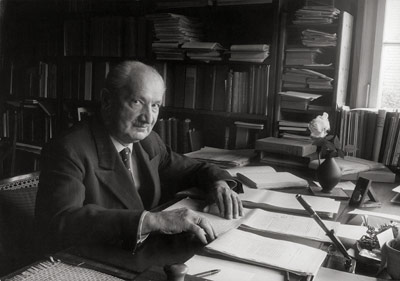From a series of articles published in The Guardian

The British philosopher, now based at the New School for Social Research in New York, has long been a strong advocate of the work of Martin Heidegger. As it happens, I think Critchley was the first writer to spark my own interest in Heidegger's writing, although, if I'm honest, I haven't yet grappled with the works themselves - I've been content to read the summaries and interpretations of others. But anyway! Back to the point:
Critchley has begun a series of webblogs for The Guardian newspaper, in which he discusses the impact of Heidegger's thought on Continental Philosophy, and the history of Western thought. The idea is to unpack some of the stigma attached to Heidegger's difficult writing style, alongside some of his repugnant political affiliations, and elucidate the themes of his major work, Being and Time. This is no mean feat, and I don't envy him the task. But the real intention underlying these blogs is to inspire a similar interest in others, to prompt our own engagement with this controversial but brilliant philosopher. I'm already to read the next installment:
'Crudely stated, for thinkers like St Paul, St Augustine, Luther and Kierkegaard, it is through the relation to God that the self finds itself. For Heidegger, the question of God's existence or non-existence has no philosophical relevance. The self can only become what it truly is through the confrontation with death, by making a meaning out of our finitude. If our being is finite, then what it means to be human consists in grasping this finitude, in "becoming who one is" in words of Nietzsche's that Heidegger liked to cite. We will show how this insight into finitude is deepened in later entries in relation to Heidegger's concepts of conscience and what he calls "ecstatic temporality".
''Being and Time' begins with a long, systematic introduction, followed by two divisions, each containing six chapters. I have just finished teaching the whole book in a 15-week lecture course at the New School for Social Research in New York and I estimate that I spoke for about 2 hours a week. As they say here in New York, just do the math! Therefore, in the following 7 short blog entries, I can only give a taste of the book and offer some signposts for readers who would like to explore further.'


